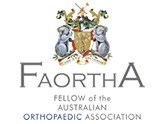
Shin Splints
“Shin splints” is used to describe the pain and inflammation of the tendons, muscles and bone tissue around the tibia or shine bone (a large bone in the lower leg). It occurs as a result of vigorous physical activity such as exercise or sports. The condition is also referred to as medial tibial stress syndrome (MTSS).
The common cause of shin splints is overuse of muscles and bone tissue of the tibia because of repetitive sports activity and a sudden change in the physical activity level. The other causes of shin splints include:
- Stress fractures (tiny, hairline breaks) of the leg bone may cause sharp pain.
- Tendonitis caused by partial tear in the tendon.
- Chronic exertional compartment syndrome: Swelling of muscles with exertion as a result, pressure is increased within the muscle compartment. Pain is severe because of loss of blood supply to the muscle.
Flat feet or a rigid arch and use of improper or worn-out footwear while exercising may increase the risk of developing shin splints. Runners and dancers are at a higher risk of developing shin splints.
The most commonly occurring symptoms include pain in front side of the lower leg. Some of the children experience pain during or after exercises. Mild swelling may be accompanied in the lower leg because of which your child may feel weak or numb.
Your doctor will diagnose the condition through physical examination of the lower leg. In some cases, an X-ray or other tests may be required to detect stress fractures of the tibia bone.
The treatment for shin splints consists of non-surgical and surgical procedures. The non-surgical or conservative procedure includes:
- Rest: Ensure that your child takes adequate rest and avoid activity that causes pain for at least 2-4 weeks. They can try low-impact exercises, such as swimming, bicycling or water running.
- Nonsteroidal anti-inflammatory medicines: are given to reduce pain and swelling.
- Ice: Apply ice packs wrapped over a cloth to the affected area for 15-20 minutes four times a day for several days. Never place ice directly over the skin.
- Compression: Wrap the leg with an elastic bandage which helps to reduce swelling.
- Flexibility exercises: It involves exercises to stretch the leg muscles to reduce pain and improve the muscle strength.
- Supportive shoes: Ensure that your child wear shoes that provide good cushioning and support the feet as it helps reduce the stress on the shin bone.
Surgical treatment is an option that is considered only in very severe cases when the conservative methods fail to relieve pain. Surgery may be needed in conditions where the pain becomes severe due to compartment syndrome. Fasciotomy is a surgical procedure where the tough and fibrous tissue is split to relieve the pressure built up within muscle compartments.
Shin splints can be prevented by following these measures:
- Ensure that your child always wear a proper fitting athletic shoe with good support
- Make sure that your child is aware of warm up exercises or stretching the leg muscles before starting any vigorous activity
- Avoid running on hard surfaces like concrete or hard surface
- Ensure that your child starts any new activity slowly and progress gradually by increasing the duration and frequency of exercise regimen












